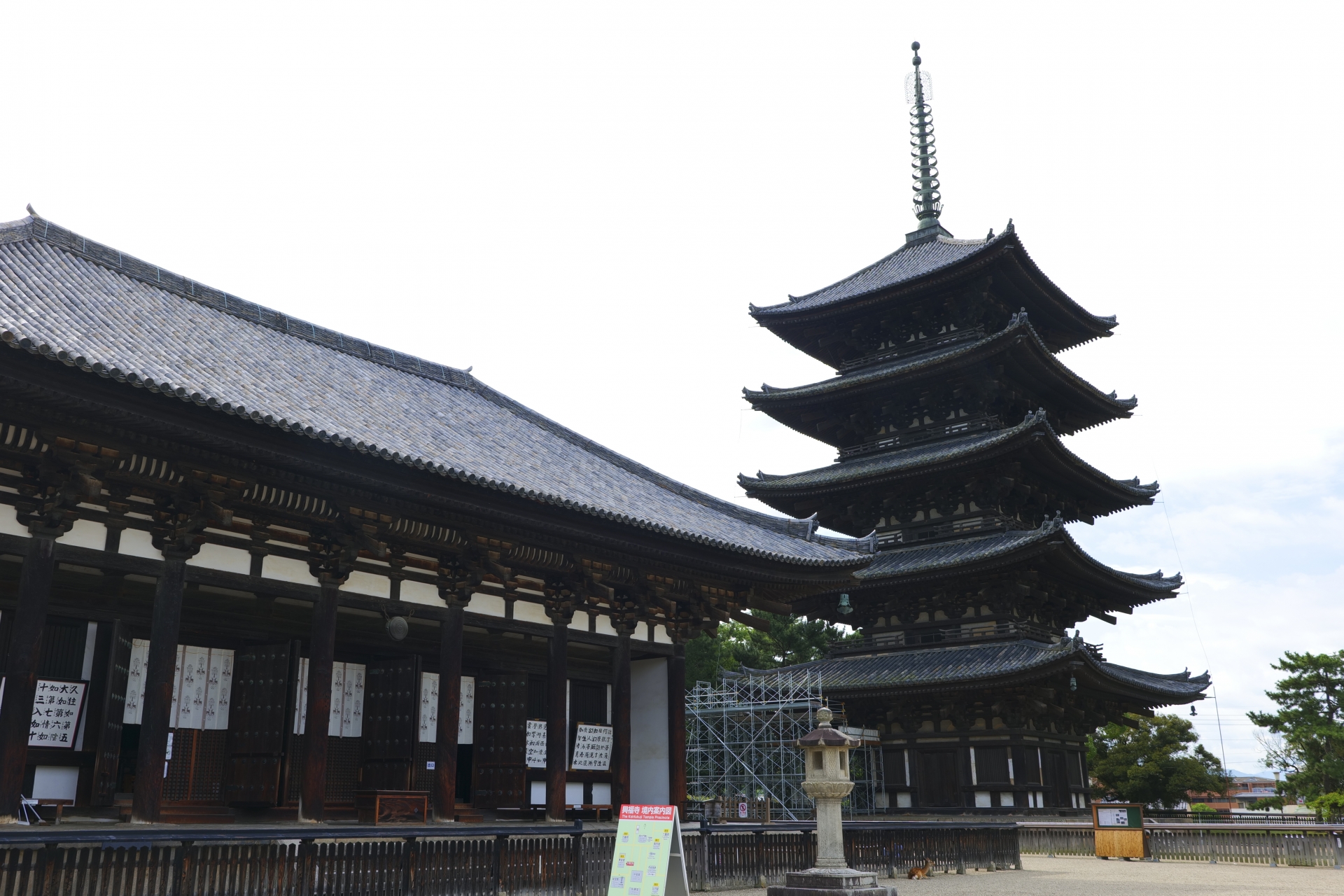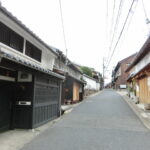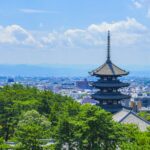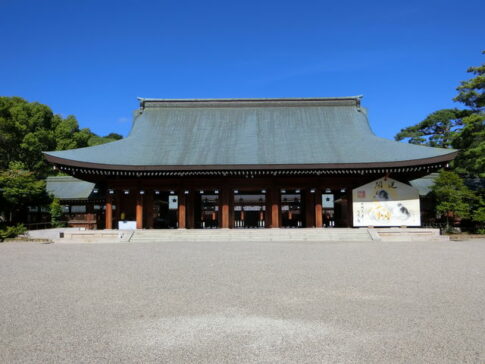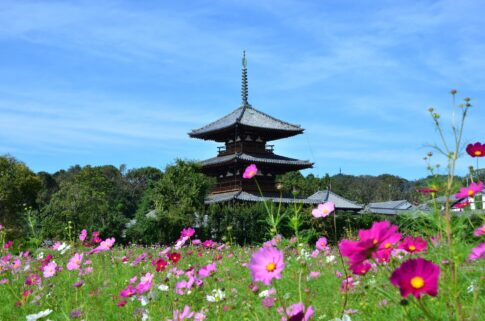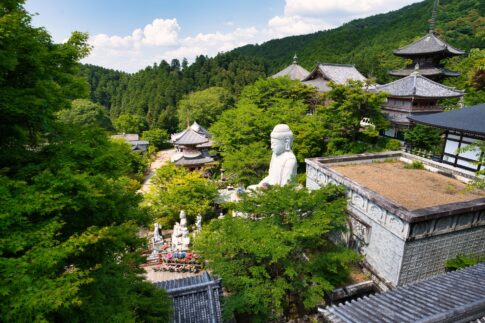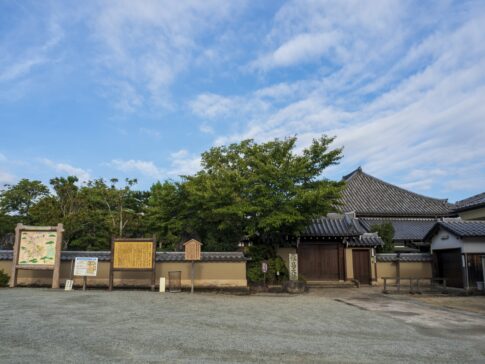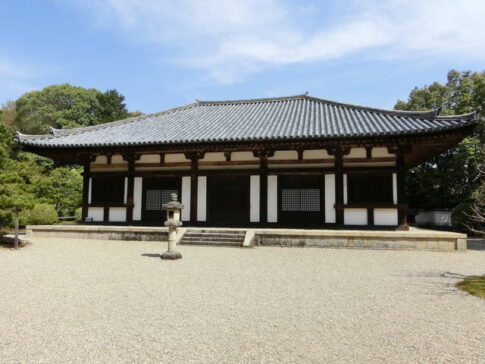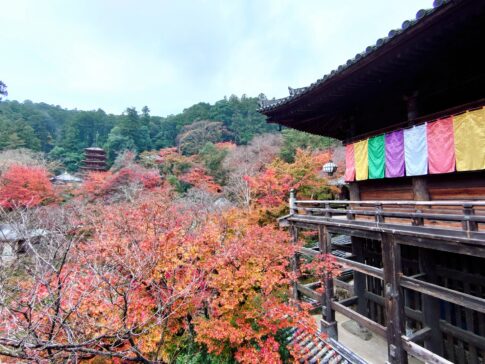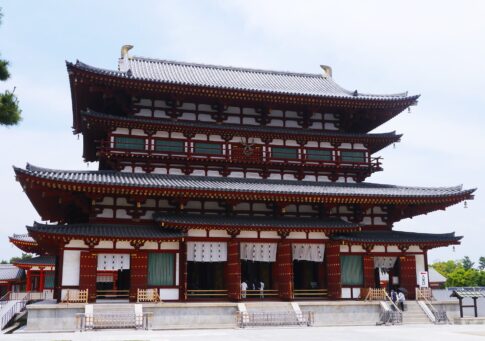Kohfuku-ji Temple is one of the most famous temples in Nara.
If you interested in temples, you should visit there!
What you need to know before visiting Kofukuji Temple
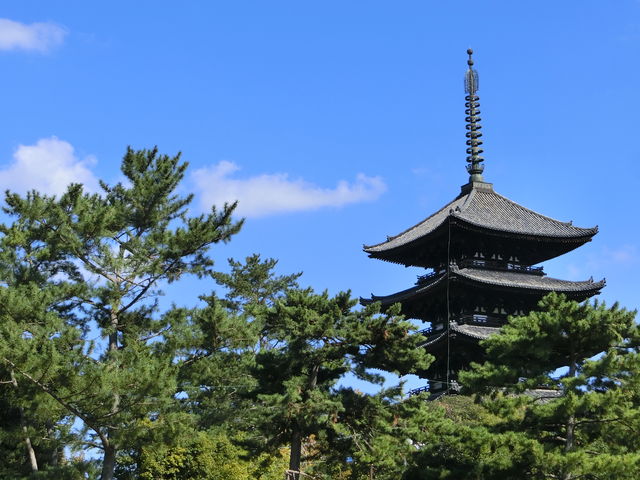
1. Basic Information
Among the Seven Great Temples of the Southern Capital, this temple developed most closely connected with the city of Nara.
Kofukuji Temple is the head temple of the Hosso sect of Buddhism. Its predecessor, Yamashina-dera Temple, is said to have been built in 669 by Queen Kagami, the wife of Fujiwara Kamatari, to enshrine the three Shakyamuni statues, the Four Heavenly Kings, and other Buddhas, in order to pray for her husband’s recovery after he became seriously ill. This name has been used as another name for Kofuku-ji Temple in later times.
When the capital returned to Asuka after the Jinshin Disturbance (672), Yamashina-ji Temple was also moved there and named “Umayasaka-dera” after its location. In 710, when the capital was relocated to Heijo, the temple was relocated according to the plan of Fujiwara no Fuhito and named “Kofuku-ji Temple”.
The temple was one of the four major temples in the Nara period (710-794) and one of the seven major temples in the Heian period (794-1185), and was especially well protected due to its close relationship with the regal family, the Fujiwara no Kita family.
During the Heian period, the temple gained control over Kasuga Shrine, and even held Yamato Province in its own right. In 1595, the Tokugawa shogunate established a combined “Kasuga Shrine and Kofukuji Temple” as the governor, with a total of 21,000-odd koku, and the temple maintained its prestige even under the Tokugawa regime.
Later, Kofuku-ji suffered from the Meiji government’s decree separating Shintoism and Buddhism from Buddhism, as well as the movement to abolish Buddhism in accordance with the decree to superiorly control shrine and temple domains.
2. History of Kofukuji Temple
In 2010, Kofuku-ji Temple celebrated the 1,300th anniversary of its foundation.
In the Middle Ages, when samurai warriors were the dominant rulers, Kofuku-ji ruled over Yamato Province as Kasuga Shrine Kofuku-ji Temple.
The temple wielded immense power in both the sacred and secular spheres.
The many creative cultures he created were multifaceted.
These included Buddhist psychology, academic and performing arts such as Noh and Kyogen, and the sculptures of the Kei school beginning with Unkei.
The arts, such as Noh and Kyogen, and the sculptures of the Kei school, which began with Unkei, were also produced.
Food culture, such as tofu, miso, and sake. From philosophy to food, traditional culture is alive and well in our daily lives.
Kohfukuji Temple has left a lasting mark on the history of Japanese culture, but due to several fires, the original hall was destroyed and the oldest remaining building in the temple complex is the Hokuendo, which was built in the Kamakura period.
The oldest remaining building in the temple complex is the Hokuendo, which was built in the Kamakura period (1185-1333).
The Chukondo, the central hall of Kofukuji, has been restored to its Tenpyo period appearance.
The Richu-bashira ceremony was held on October 16, 2010, and the reconstruction was completed in 2018, restoring the hall to its Tenpyo-era appearance.
After the restoration of the Chukondo, Kohfukuji Temple will continue to promote its precinct maintenance projects under the slogan of “reconstruction of the cultural space of the Tenpyo Period”.
Speaking of the Tempyo period, Kohfukuji’s Ashura was built during this period.
Ashura is a living witness of what Japan has seen since then.
We invite you to visit the temple and talk with Ashura, and you may hear the voices of your fathers, mothers, grandfathers, grandmothers, and our ancestors who started the nation building of Japan in a dialogue that transcends 1300 years.
3. Chukondo at the center of the Kofukuji temple complex
According to the temple’s legend, the founder of Chukondo was Fujiwara no Fuhito, who organized the Ritsuryo system of Japan and laid the foundation for the glory of the Fujiwara clan.
When it was first built, the Chukondo was one of the largest temples in the Nara period. At that time, the hall was centered around a statue of Shaka Nyorai (Shakyamuni Buddha), and was flanked by statues of Yakuo (King of Medicine), Yakujobosatsu (Bodhisattva of Medicine), and Kannon (Eleven-faced Goddess of Mercy), as well as statues of the Four Heavenly Kings, and a group of Maitreya Pure Land images built by Tachibana Sanjiyo in 721 on the first anniversary of the death of her husband, Fuhito, in the temple.
After the temple was destroyed by fire in 1717 (Kyoho 2), financial problems prevented rebuilding, and about 100 years later, a temporary hall was rebuilt in 1819 (Bunsei 2) on a reduced scale with contributions from the merchants.
However, because it was built only as a temporary structure, it was not intended for long-term use, and pine, an unsuitable material, was used for lumber, which rapidly deteriorated.
In 2000, the temporary hall was dismantled in order to restore it to its original style.
After excavation and research, a erection ceremony was held in 2010, followed by a ridgepole ceremony in 2014, and the reconstruction was completed in 2018.
4. Five-storied pagoda
The pagoda is a tombstone for the Buddha’s relics, and was a symbol of authority in Buddhist temples of the time.
The construction of a pagoda is considered to be a great virtue, as it is a way of upholding the Dharma of Buddha.
The five-story pagoda of Kofukuji Temple was built in 730 at the request of Empress Komyo, daughter of Fujiwara no Fuhito, the founder of Kofukuji Temple. After being burnt down and rebuilt five times, the present pagoda was reconstructed around 1426 (Oei 33).
It is the second tallest pagoda in Japan and symbolizes the ancient capital of Nara.
It was rebuilt in its original location and retains many features of the Nara period, such as the use of a structure called a mitesaki tokyo, but it also boldly incorporates medieval and dynamic techniques.
When it was first built, it was about 45 meters high, and each tier was said to have housed a crystal pagoda and a Mukujokoudarani Sutra, while the first tier was said to have housed the Yakushi Jodo-hen on the east, Shaka Jodo-hen on the south, Amida Jodo-hen on the west, and Maitreya Jodo-hen on the north, each of the four pillars, making it the highest pagoda in Japan at the time.
Today, the statues of Yakushi Sanzon, Shakyamuni Sanzon, Amida Sanzon, and Maitreya Sanzon (all made in the Muromachi period) are enshrined on each of the four sides of the platform on the first floor, continuing this tradition.
Summary
Kofukuji Temples have various buildings such as halls, towers, and gates.
You can enjoy seeing a wide variety of historical buildings just by going there!
